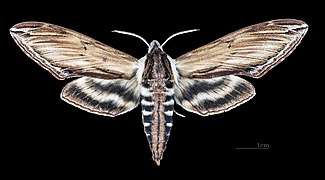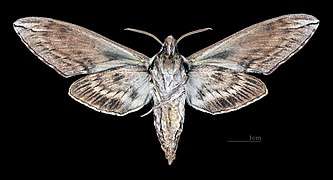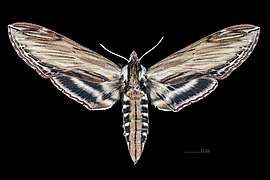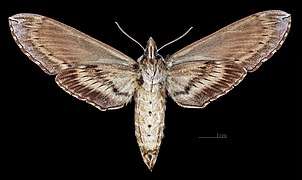Sphinx kalmiae
Sphinx kalmiae, the laurel sphinx, is a moth of the family Sphingidae.
| Laurel sphinx | |
|---|---|
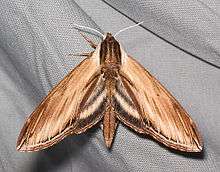 | |
| Scientific classification | |
| Kingdom: | Animalia |
| Phylum: | Arthropoda |
| Class: | Insecta |
| Order: | Lepidoptera |
| Family: | Sphingidae |
| Genus: | Sphinx |
| Species: | S. kalmiae |
| Binomial name | |
| Sphinx kalmiae J. E. Smith, 1797[1] | |
Distribution
It is found in the temperate parts of the United States and southern Canada east of the Great Plains, in the north it occurs west of the Rocky Mountains.
Biology
In Canada, there is one generation per year with adults on wing in June and July. More to the south, there are two generations per year with adults on wing from late May to June and again from July to August. There may be as many as six generations in Louisiana.
The larvae feed on Chionanthus, Kalmia, Syringa and Fraxinus species. They are blue-green or yellow-green with seven diagonal lines that are white edged with black above and usually yellow below.
gollark: Hi again. Carpeted capacitors are unnecessary. Power is disabled.
gollark: Personally, I just make MELON™ instead of nonsense pam's stuff.
gollark: Æ everyone!
gollark: The magic of potatOS potatoengineering™.
gollark: Run upd?
References
- "CATE Creating a Taxonomic eScience - Sphingidae". Cate-sphingidae.org. Retrieved 2011-11-01.
This article is issued from Wikipedia. The text is licensed under Creative Commons - Attribution - Sharealike. Additional terms may apply for the media files.
